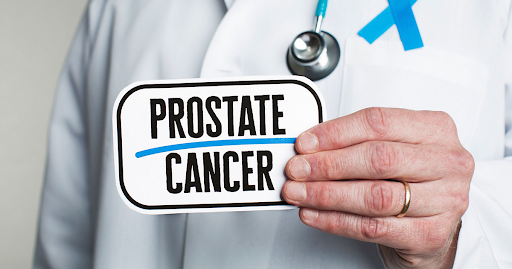
Prostate cancer is one of the most common cancers affecting men worldwide. Early detection and proper treatment play a crucial role in improving outcomes and ensuring a better quality of life. Understanding the different treatment options available can help patients and their families make informed decisions, from diagnosis to full recovery.
Understanding Prostate Cancer
The prostate is a small gland located below the bladder and in front of the rectum, responsible for producing seminal fluid. Prostate cancer occurs when abnormal cells in the prostate grow uncontrollably, forming tumors. While some prostate cancers grow slowly, others can be aggressive and spread quickly to other parts of the body.
Diagnosis: The First Step
Early diagnosis is key to effective treatment. Common diagnostic methods include:
- PSA Blood Test: Measures the level of prostate-specific antigen in the blood. Elevated levels may indicate prostate cancer.
- Digital Rectal Exam (DRE): A physical examination where a doctor checks the prostate for abnormalities.
- Biopsy: A small tissue sample is taken from the prostate and examined for cancer cells.
- Imaging Tests: MRI, CT scans, or bone scans help determine the cancer’s stage and spread.
Once diagnosed, doctors evaluate the stage, grade, and aggressiveness of cancer, which helps guide the treatment plan.
Treatment Options
Treatment for prostate cancer depends on the stage, age, overall health, and patient preference. Common options include:
1. Active Surveillance
For slow-growing or low-risk prostate cancers, doctors may recommend active surveillance. This involves regular monitoring through PSA tests, DREs, and occasional biopsies, delaying treatment until necessary. This approach helps avoid potential side effects of aggressive treatments.
2. Surgery
Prostatectomy, or surgical removal of the prostate gland, is often recommended for localized cancers. Modern techniques like robotic-assisted surgery allow precise removal with reduced recovery time. Surgery can be curative for many patients.
3. Radiation Therapy
Radiation therapy uses high-energy rays to target and kill cancer cells. There are two main types:
- External Beam Radiation Therapy (EBRT): Delivered from outside the body.
- Brachytherapy: Involves placing radioactive seeds directly into the prostate.
Radiation is often combined with hormone therapy for higher-risk cancers.
4. Hormone Therapy
Prostate cancer cells rely on testosterone to grow. Hormone therapy reduces testosterone levels or blocks its effect, slowing cancer progression. This treatment may be used alone or alongside radiation or surgery.
5. Chemotherapy and Targeted Therapy
For advanced or aggressive prostate cancers that have spread beyond the prostate, chemotherapy may be recommended. In some cases, targeted therapy or immunotherapy can help by attacking cancer cells while sparing healthy tissue.
6. Lifestyle and Supportive Care
Alongside medical treatment, lifestyle changes can support recovery. A balanced diet, regular exercise, stress management, and quitting smoking can improve overall health and enhance treatment effectiveness. Support groups and counseling can also help patients cope with the emotional challenges of cancer.
Cost Considerations
The cost of prostate cancer treatment varies depending on the type of therapy, stage of cancer, and hospital or clinic. For patients considering treatment in India, Prostate Cancer Treatment Cost in India is often more affordable compared to Western countries while still offering world-class medical care. Many hospitals provide personalized treatment plans and financial guidance to help patients manage expenses.
Recovery and Follow-Up
Recovery depends on the type of treatment received. Surgery may require a few weeks of rest, while radiation and hormone therapy may have ongoing effects. Regular follow-up appointments, PSA tests, and imaging help ensure the cancer remains under control. Early intervention in case of recurrence is crucial for long-term survival.
Final Thoughts
Prostate cancer can be effectively managed with timely diagnosis and the right treatment plan. Patients should consult experienced oncologists to understand the options best suited for their condition. Being informed, proactive, and supported emotionally can make the journey from diagnosis to recovery smoother and more empowering.







